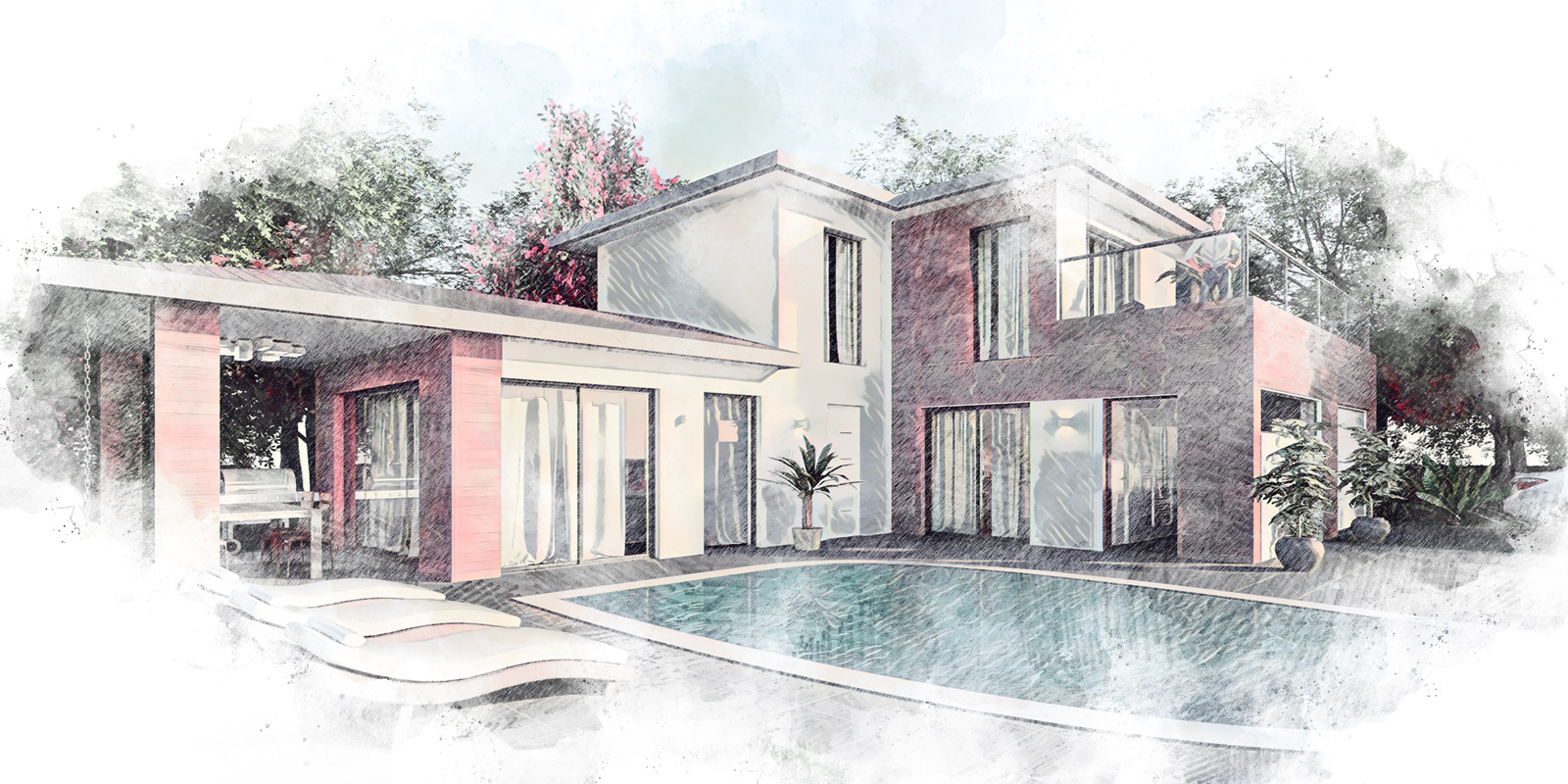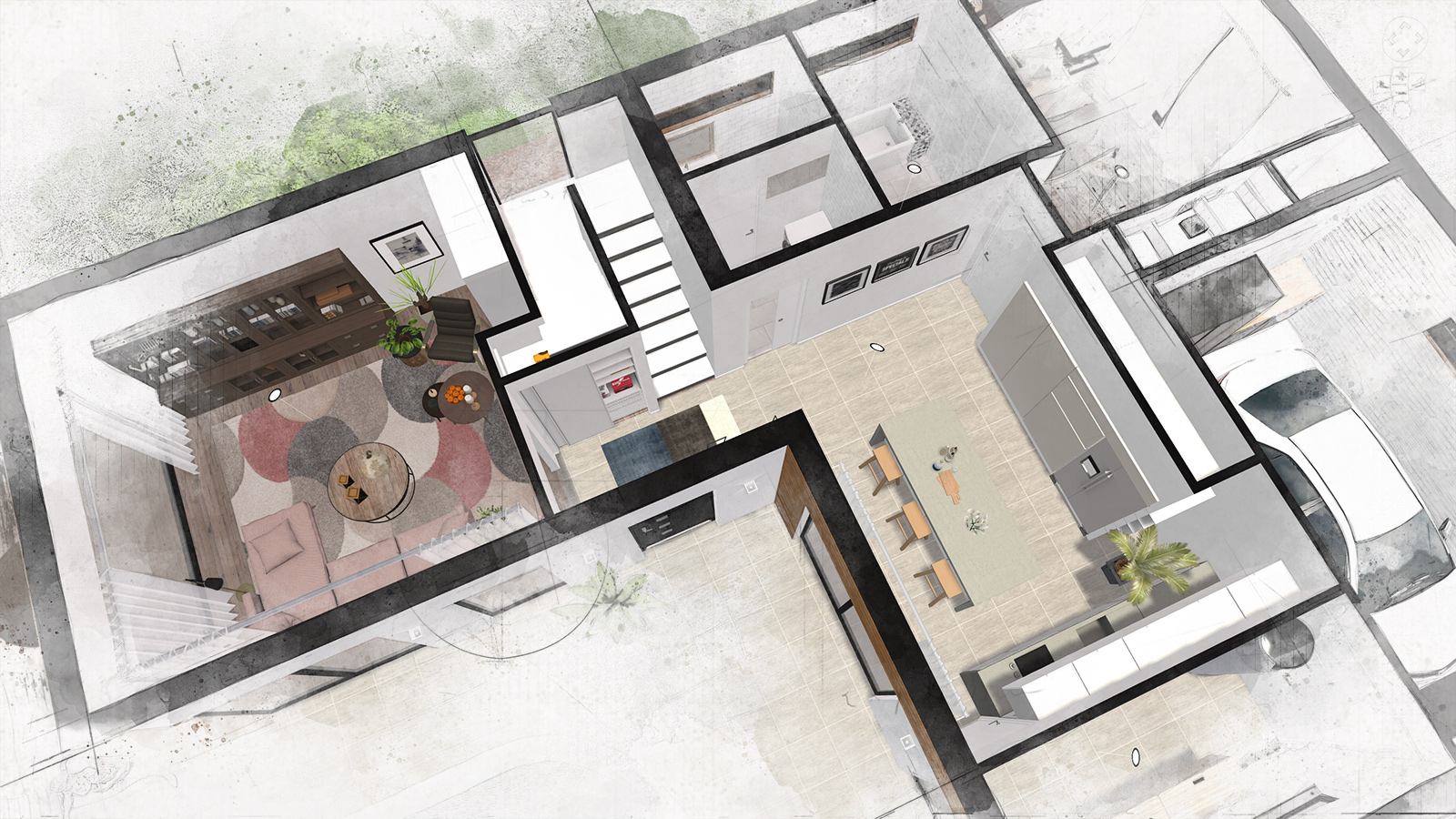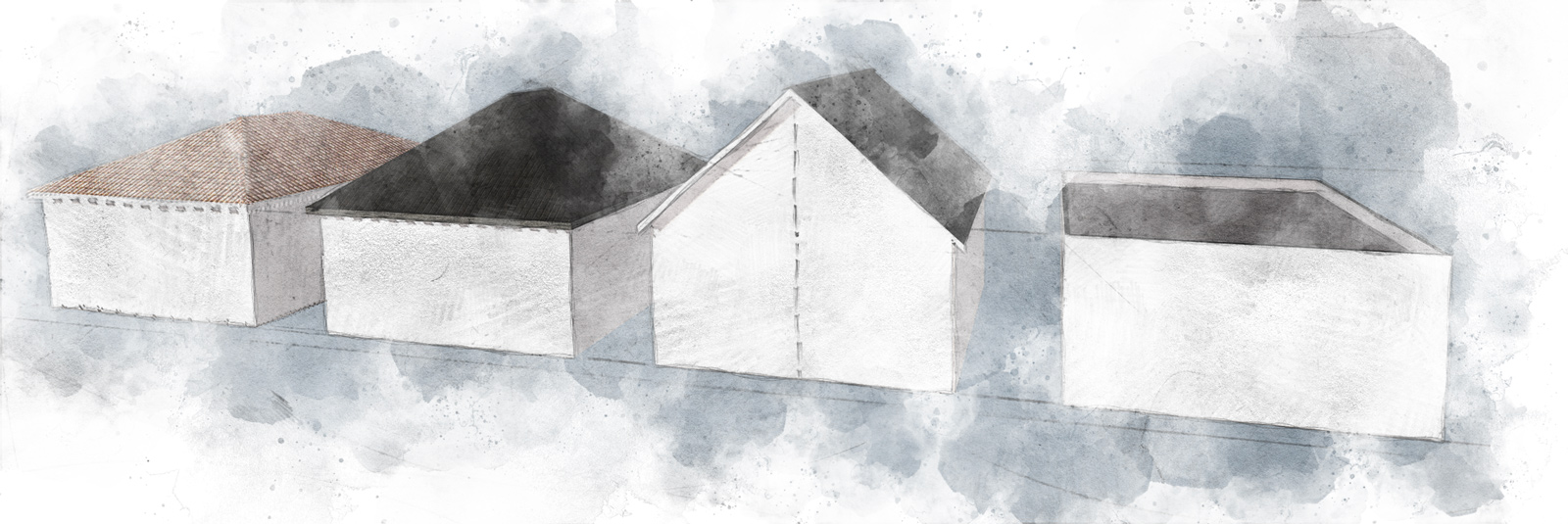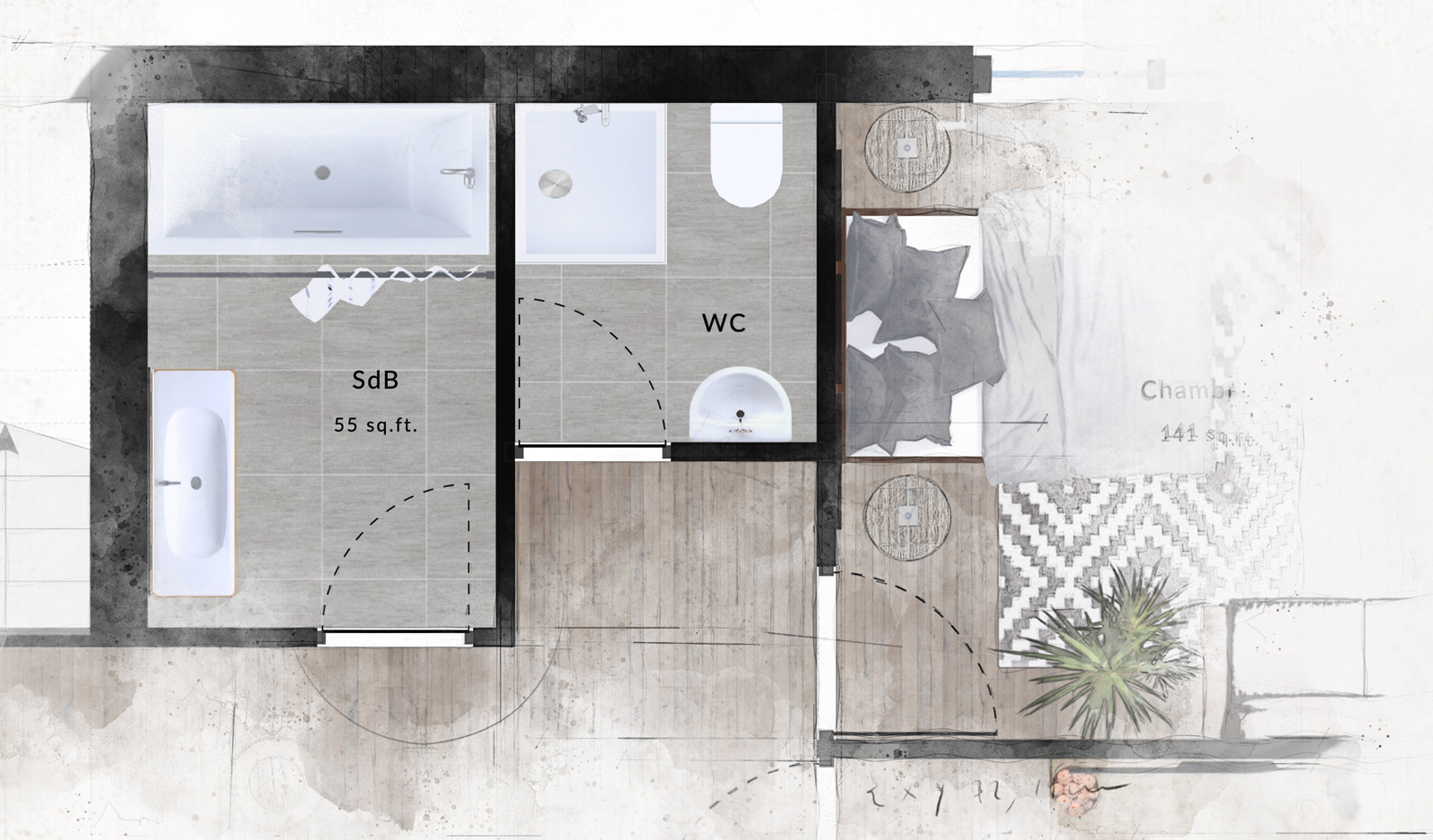Exploring the Unique Architectural Features of Modern French Homes
[.hero]French Modern houses are unique in their combination of timelessness, comfort, and elegance. With a history of artistic appreciation and an emphasis on innovative materials, these homes stand out with attention to detail and respect for simplicity. With this article, we will try to explore the features that make modern French houses so distinct.

Designing for the Future: The Rise of Neo-Traditional Architecture with Modern Sobriety
France has always been known for its rich architectural heritage and timeless design. However, in the last decade, a trend in the French architecture scene has been growing to blend traditional styles with modern elements to create aesthetically pleasing and functional buildings. Although the names of architectural movements are often attributed decades after their creation, it would not be inappropriate to call this movement « neo-traditional architecture.»
A critical aspect of this trend is the focus on modern sobriety, denoted by simplicity of form, the minimalism of line, and thoughtful use of materials and colors. This approach is versatile, adaptable to various urban and architectural contexts, and suitable for new buildings and renovations.
One of the other reasons why the neo-traditional architectural trend is gaining popularity among architects and homeowners is its cost-effectiveness. Specifically, this movement offers a balance between construction costs and product quality by using modern building techniques, thoughtful layouting of spaces, and efficient energy use.
Designing for Affordability: Solutions to Rising Real Estate Prices

In the 1960s, the cost of one square meter in Paris was relatively affordable, equivalent to approximately two months of minimum wage. Fast forward to today, that cost has risen dramatically, exceeding seven months of minimum wage. This increase in cost is due to various factors, such as the price of land, building materials, labor, and energy needed to ensure thermal comfort.
As the cost of real estate has risen, it has become increasingly important to make the most of every square meter built. This has led to a greater focus on designing homes with care and attention to spatial organization.
One of the ways this is achieved is by maximizing communal living spaces, such as the living room or kitchen, and by minimizing the size of private rooms while giving extreme attention to preserving the privacy of family members. Additionally, corridors once solely utilized for circulation now often include built-in storage options such as cabinets and shelves. In some cases, corridors even serve as an extension of the kitchen or entrance.
Another way of optimizing space is strategically placing functional rooms such as pantries, larders, and laundry rooms in one multifunctional area, often located near the kitchen and easily accessible from the hallways.
All of these changes reflect that French homes have evolved into a sophisticated system of interconnected spaces that meet the daily needs of a family. They are designed to be functional, efficient, and adaptable to the changing needs of homeowners.
Building to last: The primacy of Reinforced Concrete in France
In contrast to U.S. residential construction, which uses primarily wood framing, approximately 80% of homes in France are built with traditional concrete block construction methods and bricks, including newer techniques such as cast-in-place and precast concrete.
There are several reasons behind the widespread use of concrete in French housing construction. One is cultural: France has a rich architectural history, with renowned architects like Auguste Perret, Le Corbusier, and Tony Garnier, who heavily promoted the use of reinforced concrete. Another reason is economic: the abundance of natural resources such as limestone and clay in France, which are used to make cement, a key component of concrete. Furthermore, the French government has historically offered financial incentives for using concrete in construction.
Concrete is known for its durability, but it has its critics in the architectural community. It is worth noting that when constructed properly, a wooden building can be just as resistant, if not more so, to fire, weather, and earthquakes. Additionally, it is more energy efficient in terms of thermal insulation.
However, the French approach to building homes is based on something other than a short-term perspective but rather on building to last for generations. This mindset is rooted in cultural beliefs, such as the story of the three little pigs, where the stone house is the only one that can withstand the wolf. While residential construction's lifespan is around 50 years, French families are building homes they will pass on to their children and grandchildren.
Protecting identity: The Roof as a Symbol of Regional Identity

While the use of similar construction methods across the country may have resulted in a homogenization of architectural styles for building facades, the roof remains the most distinctive feature that represents the architectural diversity of the different regions. The diversity of roofing materials, colors, and slopes is crucial to maintaining the regional architectural identity.
In the northwest of the country, in regions such as Normandy and Brittany, the roofs are steeply pitched and covered with slate tiles exuding elegance and serenity. In contrast, in the north-central region, such as Paris, mansard roofs with zinc roofing are a standard feature. They are a valid symbol of elegance and sophistication. In the south, gently sloping roofs covered with red canal tiles and double or even triple genoises are a testament to the Mediterranean sun. They embody the warmth and vitality of the region.
Despite the advancements in building technology that has made it possible to construct homes with flat roofs, the roof remains an essential aspect of French architectural identity. Its regional variations reflect the rich diversity that can be found in the country and are a source of pride and passion for the French people.
Creating Privacy: The Importance of Hedges and Bay Windows in French Gardens

French families greatly emphasize creating private outdoor spaces in their gardens. They achieve this by using tall hedges or walls to enclose the space and provide privacy. Gardens in France are also known for their manicured lawns, flower beds, and decorative elements that create timeless elegance.
Initially reserved for grand and luxurious homes, large bay windows become commonly used with the neo-traditional style. These windows allow for plenty of natural light and provide beautiful garden views inside the home. They add a sense of grandeur and elegance to any room.
In addition to their aesthetic appeal, gardens and bay windows play an essential role in French culture. Gardens are seen as an extension of the home and are often used to entertain guests and host family gatherings.
Combining Functionality and Sociability: Semi-open Kitchens

The semi-open kitchen concept combines the best of both worlds: the functionality of a separate kitchen and the sociability of an open American-style kitchen. It consists of having an open connection between the kitchen and another room, usually the dining room. The kitchen and dining room layout is designed to facilitate interaction between the cook and the rest of the house while keeping the cooking smells contained within the kitchen. This approach allows guests to enjoy the evening without being pressured to clean up.
The design of these kitchens is typically compact and efficient, with functionality being key. The use of modern and sleek design elements, such as minimalistic cabinetry and countertops, keeps the space looking sleek and uncluttered. They are equipped with all necessary appliances and storage options, allowing for the preparation of any French dish.
One of the advantages of this semi-open kitchen concept is that it promotes social interaction and togetherness while keeping the cooking area separate. This design is particularly well suited for modern French homes, balancing traditional French architecture and contemporary design.
Bringing Elegance: The French Tradition of Separating Bathroom and Toilet

When it comes to real estate in France, every square meter counts. So, why do the French insist on having separate bathrooms and toilets?
The first reason is traditions. Conventional wisdom says, "Echoes of the past shape our future."
A better explanation could be that the bathroom is not just a place where we take a bath or shower anymore; it's a sanctuary. It's where French people put on their makeup, unwind under a spa-like shower, read a book, or even talk on the phone for hours (not only French people). It's the ultimate private space.
On the other hand, the toilet is functional and practical, and let's be honest, not the most glamorous of places. The separate toilet provides improved cleaning and maintenance. It also eliminates odors from permeating the rest of the home.
So, in a nutshell, the French separate the bathroom and toilet because they value functionality and privacy. And honestly, it's just one of those quirks that make French homes unique and special.
The future of housing in France: A Real Focus on Sustainable and Energy-efficient Buildings
In recent years, France has imposed increasingly strict thermal regulations to improve its buildings' energy performance, which greatly impacted the use of space and building materials.
For example, the location of a building on a construction site is now chosen according to the sun path to maximize the use of passive solar energy. The openings on the south facades are enlarged to allow natural light to enter and to benefit from more passive solar energy. In contrast, those on the north facades are reduced to limit heat loss.
As far as materials are concerned, local materials, similar to those used in vernacular architecture, are preferred. Thermal bridges are also avoided, and insulation is reinforced to minimize heat loss. The glazing used also has better thermal resistance to improve energy efficiency.
With the financial incentives offered by the French government, more homeowners are opting for more efficient heating systems such as heat pumps and thermodynamic water heaters to replace the old oil or electric heating systems.
In short, the future of housing in France is moving towards more ecological and energy-efficient homes to meet current environmental challenges.
Conclusion
In brief, the trend of Neo-Traditional Architecture in France is focused on blending traditional and modern design elements to create functional and eco-friendly buildings. It prioritizes modern sobriety, environmentally-friendly materials and techniques, and organizing spaces to match contemporary lifestyles while preserving traditional elements. This design approach not only results in attractive buildings but also addresses the challenges of rising real estate prices and energy costs.
Now that you know more about these architectural trends in France, you can incorporate them into your next home or use them to renovate your current home. Fortunately, Space Designer 3D is here to help. We have used Space Designer 3D to create all floor plans and illustrations in this blog. You can view them by clicking on this link, copying them, and adapting them to your needs. Feel free to share your projects with us. Happy designing!
